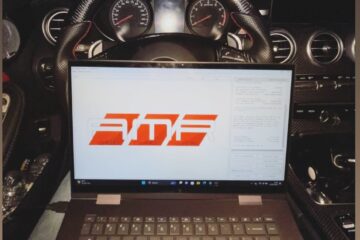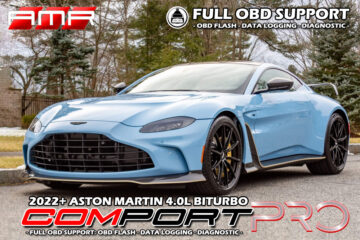Engine: Handcrafted AMG 4.0L V8 BiTurbo
Compression Ratio: 8.6:1
Factory Horsepower Rating: 603hp @ 5,750–6,500rpm
Factory Torque Rating: 627tq @ 2,500–4,500rpm
Transmission: AMG SPEEDSHIFT® MCT 9-Speed
Lets take a closer look into the factory tune. Using the AMR Performance #COMPORT #PROTUNER SUITE feature “Log Data Visualizer“, we can plot and analyze the data we collected from the vehicle while doing the dyno pull using the COMPORT PROTUNING SUITE data logging feature. Today we will take a look at boost. Below we will plot the Boost Pressure Actual, Boost Target Pressure, Engine Speed and the vehicles Throttle Pedal Position.
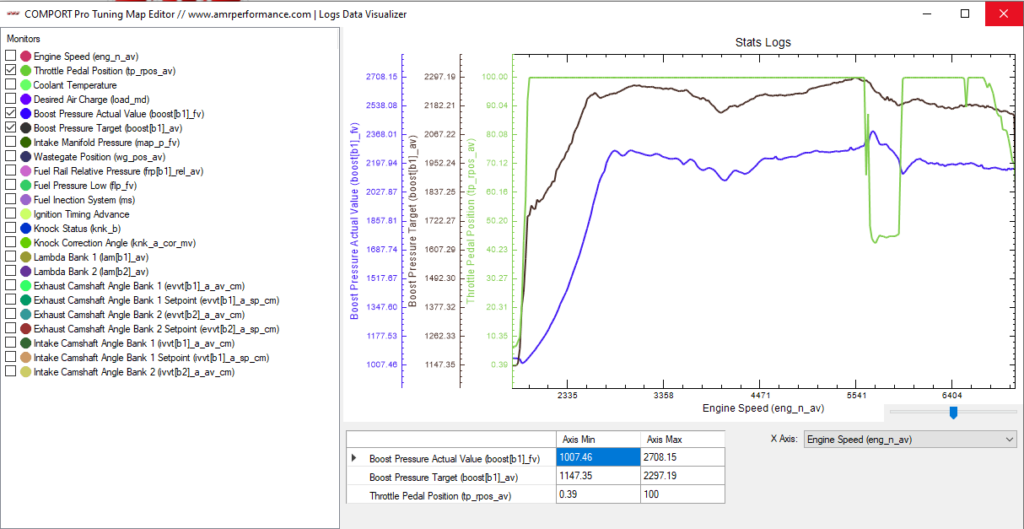
We know what you are thinking, why did we choose the Throttle Pedal Position when looking at the boost? We choose this because this specific vehicle uses airflow and torque dynamic to achieve its specified boost target. Meaning the vehicle is trying to achieve a specific torque rating, so it will increase boost to achieve this but is limited by restrictions. These restrictions are called limiters. Lets take a closer look at what is going on below.
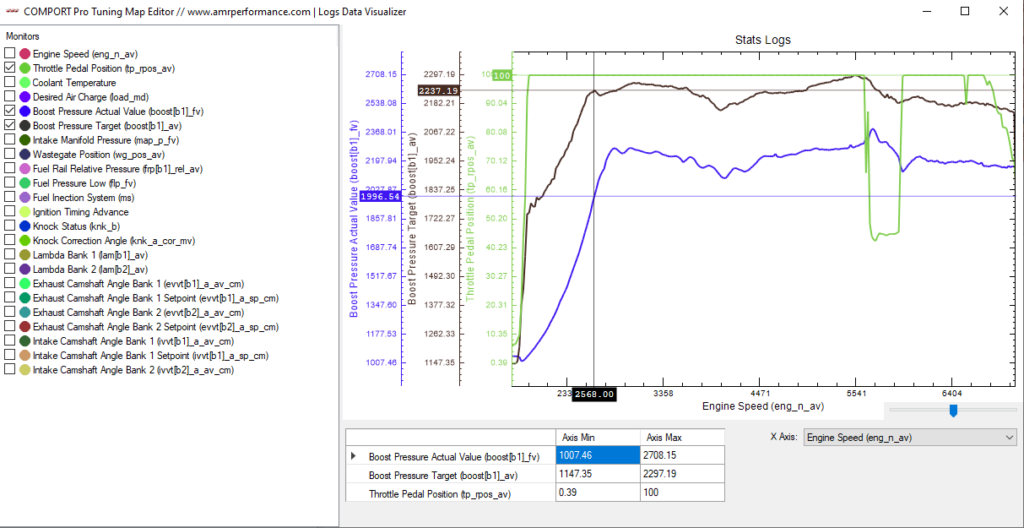
You can see from the BOOST TARGET PRESSURE that the vehicle is trying to achieve 2237mbar target at 2568rpm, so the throttle is at maximum position to allow as much as flow as demanded to achieve this, however we are only achieving 1996mbar at that engine speed position. Which indicates that the current stock tune’s boost, airflow, torque and limiters are not optimal in this area. This seems to be the case throughout the RPM.
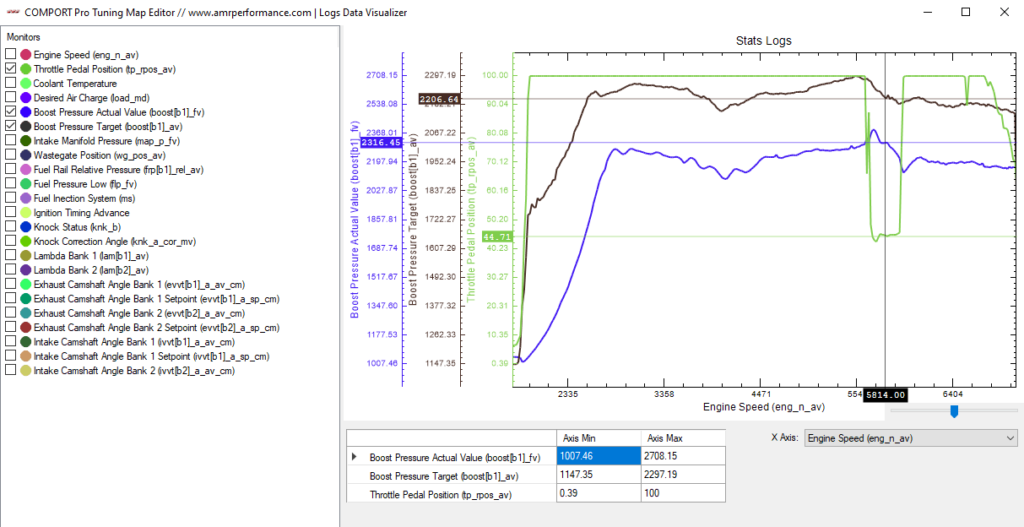
This is where we see the opposite. As seen in the upper RPM band, from 5600-5900rpm, the vehicles Throttle Pedal Position drops to 44% from the 100%. Why did this occur? Looking at the Boost Pressure Actual we can see that the vehicle is running 2316mbar but the stock tune’s Boost Pressure Target are asking for 2206mbar. This is what we call boost spike or more commonly know as over-boost. Since this is occurring, the vehicle’s boost safety limiters have kicked in, one of which is the Throttle Pedal Position closing the throttle plate to 44% in an attempt to lower the airflow and boost charge to try and correct the over-boost by limiting the amount of airflow going into the engine. If this becomes to severe, the next line of limitations done by the ECU are kicked in either. These limitations can vary on ECU, but are not limited to torque limiter, boost limiter, airflow limiter, throttle air flow limiter, etc…
Unknown to the driver, the factory ECU & factory limiters as well as formulated conditions is continuously adjusting and making corrections in an attempt to keep the vehicle performing.
Could you leave this the way it is? – You can, but if something is not running optimal, then it is prone to “quirks” and can cause other issues such as inconsistent heat signatures on components, in-adequate fuel mixtures, etc…
If I add a downpipe to the stock tune, will it make this issue worse? – Yes! This is 100% correct. Most think that because a check engine light has been triggered that the vehicle runs fine. Running “fine” and running “correctly” are two completely different things. Adding the downpipe will cause drastic boost oscillation, erratic fuel corrections and large swings in airflow dynamic. This can lead, to name a few, to faster engine wear, detonation, knock, or worse, engine failure.
What can be gained by correctly dialing in all of the boost control system properly? – A stronger, safer and better performing vehicle!
